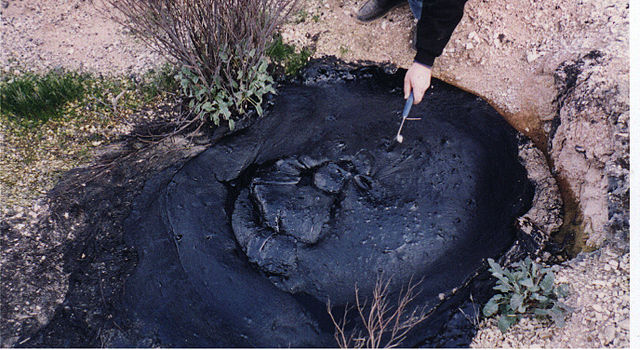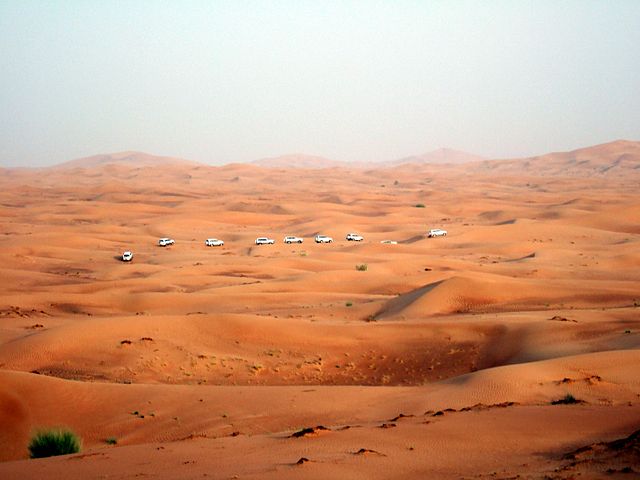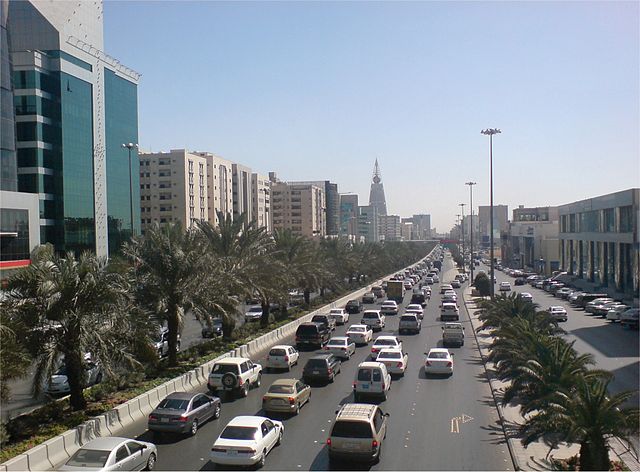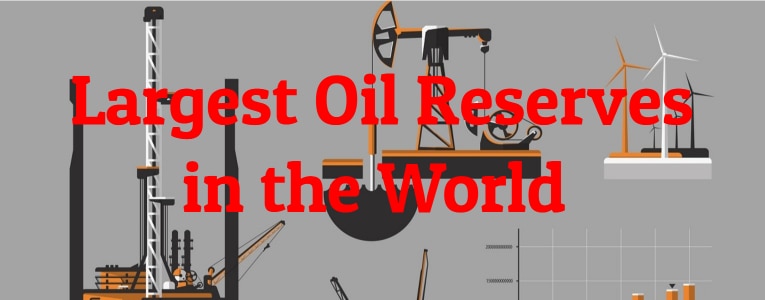While concerns about the possible dangers of climate change have led to an increasing interest in clean energy, the vast majority of the global population still relies heavily on fossil fuels. The oil industry is still a cornerstone of many economies around the world, and a nation’s oil reserves often play a major role in determining its economic power.
Oil reserves are calculated in terms of how much oil could be feasibly extracted based on current oil prices. Based off the current price of oil, just how large can oil reserves get? Today we’ll be looking at the 10 largest oil reserves in the world as measured by standard barrels of accessible oil.
-
United States
Capital: Washington, D.C.
First Big Oil Strike: 1859
Other Major Export: Machinery
 Source: wikimedia.org
Source: wikimedia.org
In addition to making it into the top 10 oil reserves in the world, the United States also consumes more oil and natural gas than any other nation in the world. Nearly 40% of America’s oil is obtained in the state of Texas alone, and the Marcellus Shale Area that stretches from New York to West Virginia complements America’s fossil fuel industry with the most gas rigs in the country.
Did You Know?
American oil has been given nicknames such as “Texas Tea” and “Black Gold”.
-
Libya
Capital: Tripoli
First Big Oil Strike: 1959
Other Major Export: Scrap copper and iron
 Source: wikimedia.org
Source: wikimedia.org
Libya boasts the largest oil reserves in the entirety of Africa along with a conveniently low-cost production of sweet crude oil. The first rewarding Libyan oil well was struck in present-day Nasser, which was formerly known as Amal and Zelten. Libya began exporting this lucrative resource right away, joining the Organization of the Petroleum Exporting Countries (OPEC) almost immediately afterwards.
Did You Know?
While Libya has the largest oil reserves on the continent, Nigeria actually produces more oil.
-
Russia
Capital: Moscow
First Big Oil Strike: 1982
Other Major Export: Rolled steel
 Source: wikimedia.org
Source: wikimedia.org
Oil has been an important part of Russian history for many years, providing around 80% of Russia’s hard currency during the years following the dissolution of the Soviet Union. Europe has also depended heavily upon Russia for oil and natural gas resources, accounting for approximately one-third of its exports. Along with boasting hefty oil reserves, Russia is also the second-largest oil exporter in the world.
Did You Know?
In addition to producing and holding tons of oil, Russia also serves as the main transit country for Kazakhstan’s oil.
-
United Arab Emirates
Capital: Abu Dhabi
First Big Oil Strike: 1958
Other Major Export: Food products
 Source: wikimedia.org
Source: wikimedia.org
Holding approximately 7% or more of the world’s proven oil reserves, the United Arab Emirates first struck oil in Abu Dhabi. Abu Dhabi remains the emirate with the largest oil reserves with a staggering 90% of the UAE’s oil. The UAE is also OPEC’s fourth largest producer of petroleum liquids. Despite the lucrative nature of its natural resources, the UAE is exploring nuclear power as a cleaner alternative.
Did You Know?
Oil is central to the economy of the United Arab Emirates, accounting for 25% of its gross domestic product.
-
Kuwait
Capital: Kuwait City
First Big Oil Strike: 1934
Other Major Export: Fertilizers
 Source: wikimedia.org
Source: wikimedia.org
The discovery of oil resources in Kuwait revolutionized its economy. To this day, Kuwait’s oil reserves remain a core factor in its international relations. The natural gas and oil sector of Kuwait’s economy accounts for at least 40% of its gross domestic product and the overwhelming majority of its exports. The development of Kuwait’s oil industry was delayed by World War II, but Kuwait fully acquired control of the Kuwait Oil Company by 1976. Afterwards, its oil industry flourished.
Did You Know?
Kuwait took note of the worldwide decline in oil prices in 2017 and began placing around 10% of its yearly government revenue into the Fund for Future Generations.
-
Iraq
Capital: Baghdad
First Big Oil Strike: 1927
Other Major Export: Fruits
 Source: wikimedia.org
Source: wikimedia.org
Iraq is the Organization of the Petroleum Exporting Countries’ second-largest producer of crude oil and shares borders with three other countries that are also OPEC members. Iraq’s natural resources have been a source of great political tension, with accusations of Kuwait using directional drilling to pilfer Iraqui oil near the border starting the first Gulf War in 1991.
Did You Know?
Despite the prevalence of oil in Iraq, the country has experienced supply disruptions that prompted an increase in oil prices.
-
Iran
Capital: Tehran
First Big Oil Strike: 1908
Other Major Export: Plastics
 Source: wikimedia.org
Source: wikimedia.org
Iran retains approximately 10% of the world’s proven petroleum reserves and boasts the first oil well in the Middle East: The Masjid-i-Solaiman. Iran’s crude oil production was doing well up until 2012, when it stagnated for a few years as a result of international sanctions that restricted its progress.
Did You Know?
In addition to ranking fourth-largest in terms of oil reserves, Iran also has the second-largest reserve of natural gas.
-
Canada
Capital: Ottawa
First Big Oil Strike: 1858
Other Major Export: Coal and electricity
 Source: wikimedia.org
Source: wikimedia.org
An impressive 97% of Canada’s proven oil reserves lie in its oil sands, which are made up of minerals and clay, bitumen, and sand. Alongside Canada’s own financial contributions, the oil sands are developed using investment money from major companies located in the United States, Asia, and Europe. Canada’s oil sands account for 11% of its Greenhouse Gas emissions.
Did You Know?
Alberta, Canada was the first North American jurisdiction to implement emission reduction measures for its large industrial facilities.
-
Saudi Arabia
Capital: Riyadh
First Big Oil Strike: 1938
Other Major Export: Ships and boats
 Source: wikimedia.org
Source: wikimedia.org
For many years, Saudi Arabia’s natural resources have been carefully guarded and shrouded in secrecy. However, third-party auditors were finally invited to assess the kingdom’s energy reserves at the end of 2018. This new level of transparency has reassured global investors of Aramco’s value and alleviated any skepticism.
Did You Know?
While Saudi Arabia’s proven oil reserves rank second place in terms of oil volume, many people consider them to hold more economic significance than the competition: they’ve been economical to produce since before oil prices rose.
-
Venezuela
Capital: Caracas
First Big Oil Strike: 1908
Other Major Export: Coffee
 Source: wikimedia.org
Source: wikimedia.org
Venezuela has the largest oil reserves in the world as measured in barrels of oil. Unfortunately, failed government policies and mismanagement of these natural oil resources have led to one of the worst economic and political crises that Venezuela has seen in decades. The resulting hyperinflation has lead to distressing shortages of basic commodities and foreign currency.
Did You Know?
A large portion of Venezuela’s oil is given to Russia and China as a form of loan repayment.
